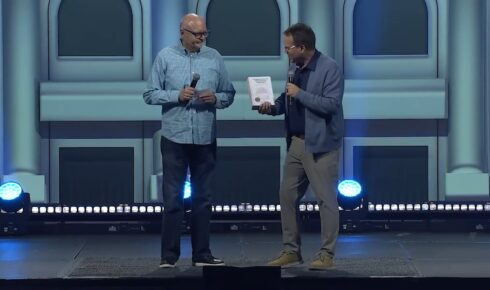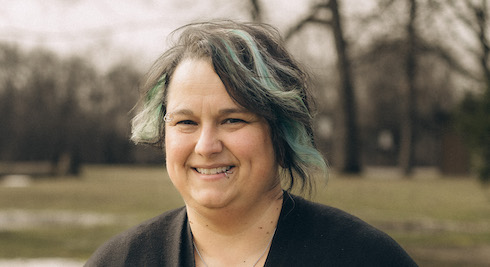
I was a student at L.I.F.E. Bible College (today called Life Pacific College) from 1945 to 1949, and it was during those years that I fell for my future wife, Winona. I mean it: I literally fell right in front of her—I fell through the stained glass skylight outside the parsonage and landed inside the Angelus Temple bookstore below.
Winona was a clerk in the store and was making change for a customer when I made my unexpected entrance. I was working as a janitor while in school and doing some painting above the bookstore when I took a wrong step. Maybe it was a right step because we have been happily married for a long time now and have enjoyed many, many years of ministry together since I “fell for her.”
Although I never had the pleasure of meeting Aimee Semple McPherson personally, I was blessed and equipped for ministry because of the legacy she left after her death in 1944. When I became a student at L.I.F.E. the next year, enrollment was about 900 in day and night classes. The women and men Sister McPherson trained to lead were equally qualified, and strong ministers and teachers.
Beyond teaching us the Bible and preparing us for ministry, these men and women of God also demonstrated for us how to wait on the Lord in prayer. Sometimes we would begin a chapel service with prayer and stay for hours in the presence of the Lord. I remember coming to class in the morning and seeing students from chapel in night school still prostrate on the steps between floors, crying out to God and drinking in the fullness of His Spirit as they prayed.
Years later, when Winona and I had the privilege of pastoring Angelus Temple, I remember thinking how innovative we were because of the eight distinct language congregations that were part of our ministry. Then, I realized that Sister McPherson did the same thing back in the 1920s and 1930s, long before multicultural ministry was popular.
I always admired the way she tried to minister to people whom others shunned. Los Angeles was especially segregated when she started Angelus Temple, and bringing races together for worship was uncommon. The Azusa Street Revival of the early 1900s brought together blacks, whites and Hispanics in Los Angeles, all of whom equally received the fullness of the Holy Spirit and worshiped God together in one place.
When the revival waned, the races divided and stopped fellowshipping as one body. Then Sister came along, some 20 years later, and tried her best to help bring people together again.
In those days, four different language groups worshiped the Lord at Angelus Temple, and Sister McPherson was a champion for each culture. She wanted to reach around the world with the Foursquare Gospel, and she wanted to reach every person right here in Los Angeles, in whatever language they spoke.
It is fascinating to me that, after all these years, the church still is trying to bring racial and cultural unity to the body of Christ. The Holy Spirit did it back then and can do it again today, if we will allow Him.
Sister McPherson used radio, a new innovation of the day, to bring people together with the gospel. She started one of the first AM frequency stations in Los Angeles and called it KFSG, with coverage that reached literally around the world.
She often mentioned how important it was to her that the radio station was picked up by Navy ships at sea so sailors could listen to the Bible being preached. When the FCC began to regulate the broadcast of AM radio, they restricted KFSG to a more local radius. Sister McPherson said the restrictions were of the devil.
It’s difficult not to admire someone as bold as Sister McPherson. No other female evangelist started a local church, a Bible college, a radio station and a movement that has thrived like The Foursquare Church even after her death.
Her ministry certainly impacted my life and that of my family. After all, the skylight in her bookstore brought my wife and me together, and for that I am sincerely thankful.
This article is adapted from a video interview with Harold Helms recorded on April 13, 2004.


